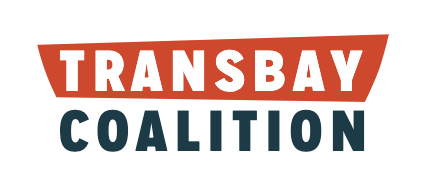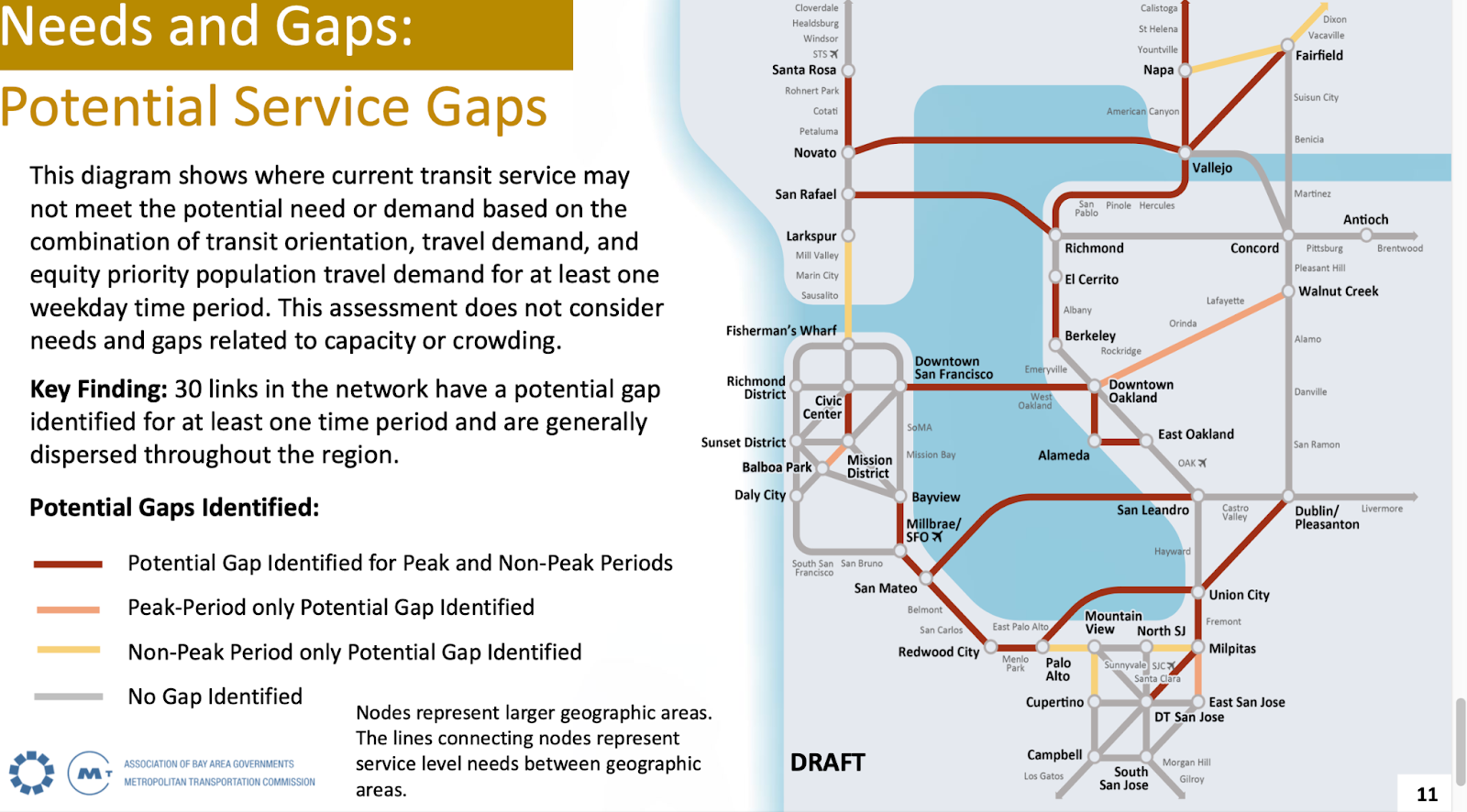Initial analysis from MTC’s Connected Network Plan reveals the service gaps that transit users experience on the southern transbay bridges between San Mateo and Alameda Counties.
For the first time in history, the Bay Area is approaching its long-range transportation planning with an assessment of travel demand and the level of service needed to address the demand.
Transit service over the 92 bridge between Hayward BART and Foster City/San Mateo was eliminated during the pandemic and has not been restored. And service over the 84 Dumbarton bridge does not and has not in the past run on weekends, even though people travel over the bridge to jobs at medical centers, retail and restaurants, and to visit friends and family.
The analysis shows that the demand for transit service over the 92 and 84 bridges would be modest compared to the demand between San Francisco and Oakland over the Bay Bridge, but this modest demand is not being met with service.
Historically, the Bay Area’s plans were based on capital projects proposed by agencies and counties. Service was an afterthought, and service areas that fall between the service agencies are liable to fall between the cracks. This is different from the planning process used in regionals around the world that have excellent, well-coordinated service. For example, this report based on a recent Bay Area transit trip to Switzerland shows how the Swiss planning process starts with defining service goals, and then funds operating and capital projects to address the service goals.
More detailed information about service needs and gaps, incorporating the analysis and plans done by the region’s agencies, will be brought forward for community feedback in May. This will be an opportunity for transit riders and organizational customers to review and weigh in on where service improvements are needed.
This planning and community feedback will be particularly important since the capital and service projects approved in the region’s plans will be the leading candidates for funding in the Regional Measure being planned. And a compelling plan for frequent, fast, reliable service will provide an attractive vision for the public to vote on the measure.
Meanwhile, there is another opportunity for support and funding for southern transbay service. The San Mateo County Transportation Authority is conducting a strategic plan for the Measure W Regional Connections category of funding. Since 2018 when the measure passed, has collected about $9 million per year intended for regional connections, eligible for capital or operating costs, and none of it has been spent. One logical use could be bolstering service between San Mateo and Alameda Counties. Outreach for the plan will be held between February and April.


“… the Swiss planning process starts with defining service goals, and then funds operating and capital projects to address the service goals …” MTC and all the transit agencies have known about the Swiss approach for decades. This is the ONLY way that bay area transit [or any transit for that matter] should be approached.
We’ve tried the historic approach of Bay Area’s plans being based on capital projects proposed by agencies and counties, with service as an afterthought, for the past 70 years and it doesn’t work – period! Time for the MTC to put it’s “big-boy” pants on, take over this task and treat bay area[transportation and land-use planning in a unified and holistic manner. No more balkanized city and transit agency planning – please.